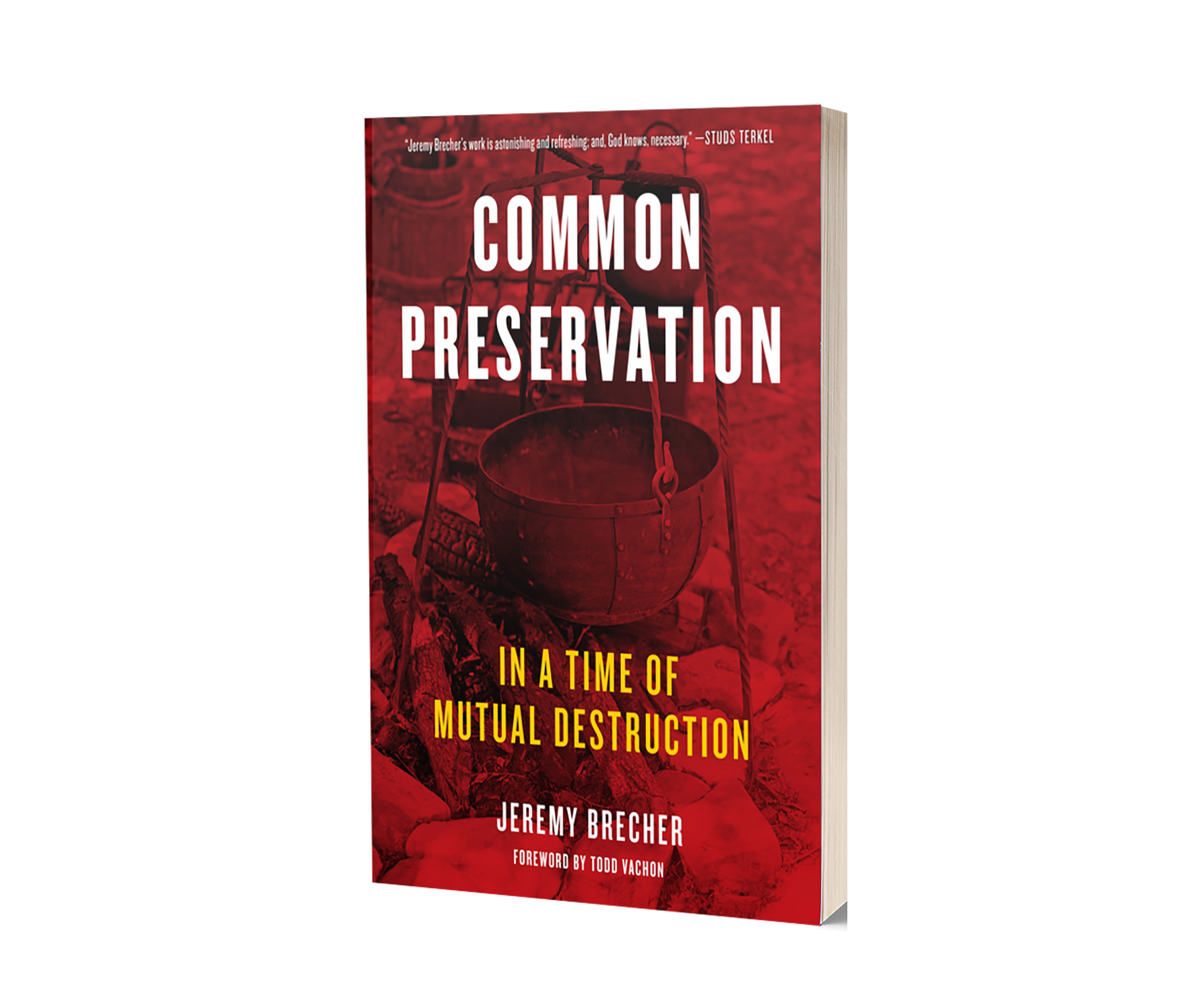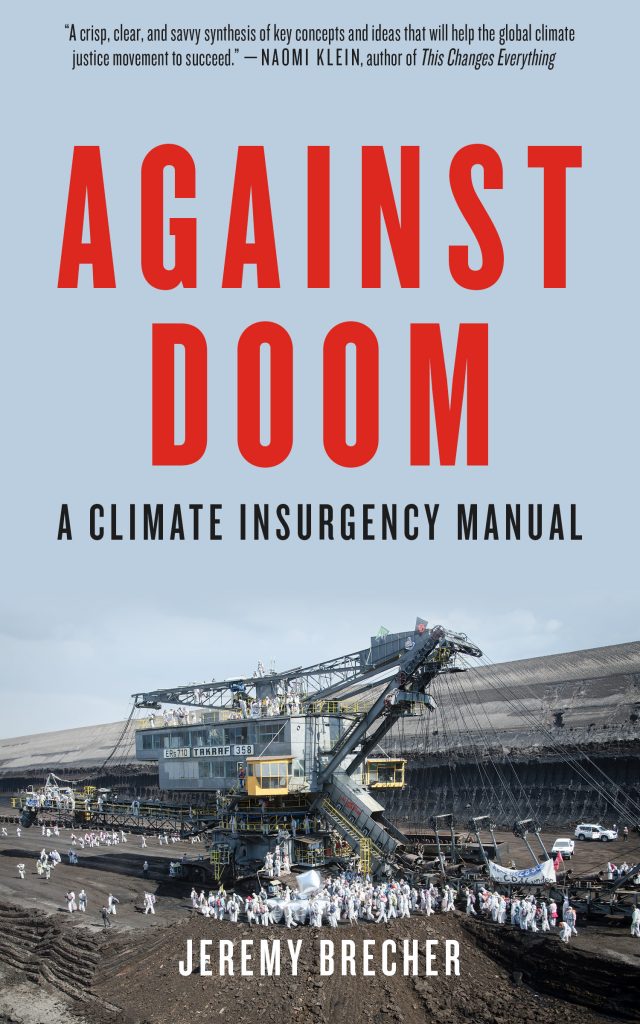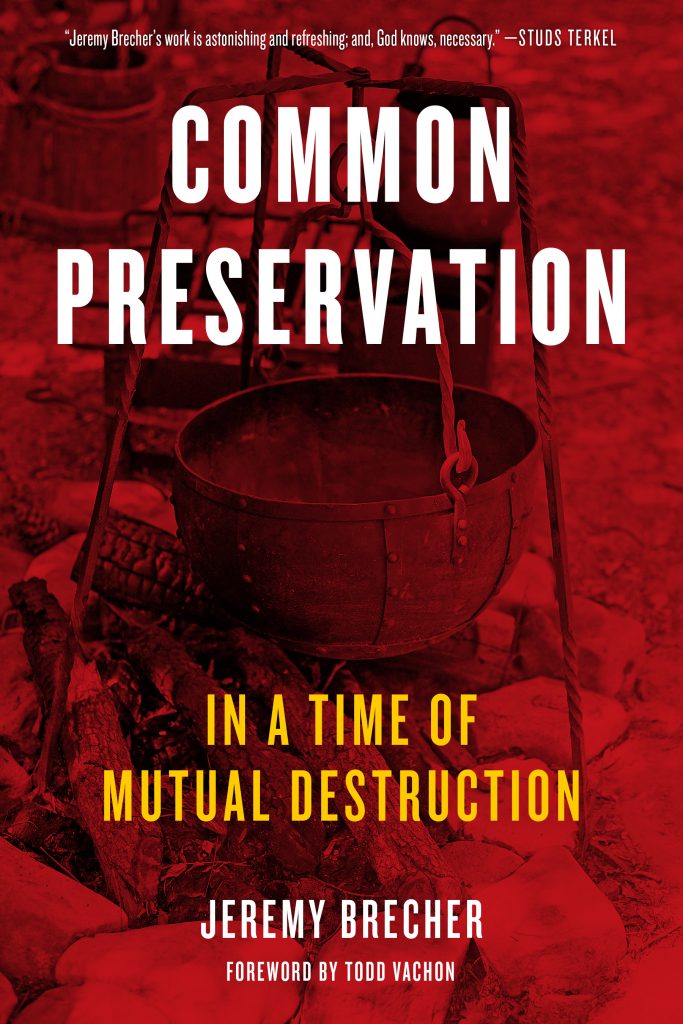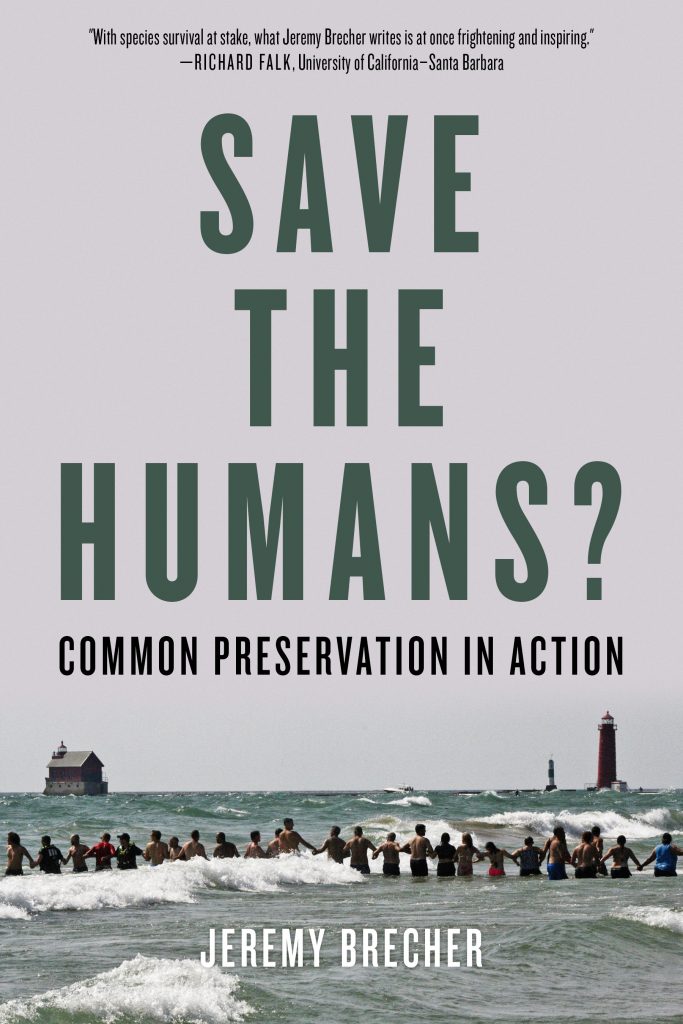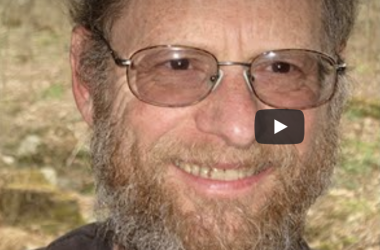By Jeremy Brecher
The Commons Library
Contents
- Introduction
- Featured Chapter – Transforming Coordination
- About the Author
- Book Overview
- Explore Further
Introduction
In the book, Common Preservation: In a Time of Mutual Destruction (2020), historian, documentary maker, and activist Jeremy Brecher draws upon lessons from a variety of social and labour movements to discuss how movements bringing people together for “common preservation” arise and can be built. Applying psychological and educational development theories from Jean Piaget he outlines a series of tools and discussion points for provoking thought about issues and solutions. The following chapter, ‘Transforming Coordination’, explores the nature of coordination and how barriers to successful coordination within social movements can be overcome.
It is often said that the first law of life is self-preservation. But from time to time people shift from pursuing their own interests and wellbeing as individuals to strategies that use collective action to realize shared ends. Back in the seventeenth century the English visionary Gerrard Winstanley called this a shift to “common preservation”. – Jermey Brecher, 2020
Featured Chapter – Transforming Coordination
However great their individual capacity to act, and however strong their common interests, people cannot pursue those interests collectively unless they can coordinate their action. Common preservation requires coordinated action for the common benefit of the actors. Indeed, it is the potential benefit of acting in concert that gives people a motive for shifting to new common preservations.
Our transforming-coordination tool explores the barriers to coordination and how they can be overcome. Coordinated actions are guided with reference to each other and their combined effect. Just as successful action requires that an actor adapt their action to its object, so coordination requires that the coordinating actors mutually adapt their action to each other.
To construct new coordinations, people must reciprocally represent each other’s patterns of action. They must vary their own action patterns so as to produce joint action intended to accomplish a joint goal. As Piaget puts it, coordination requires mutual assimilation and accommodation. Coordinators must mutually equilibrate. Coordination can increase the range of conditions that can be counteracted and reduce the cost of doing so.
Coordination creates collective power beyond that of the separate individuals whose actions are coordinated.
It’s a sociological truism that “persons in cooperation can enhance their joint power over third parties or over nature.” Coordination also makes those who benefit from that power dependent on it and on each other. Consider the struggle against the Keystone XL pipeline. Opposition to the pipeline began with Cree, Dene, Métis, and other indigenous peoples in Alberta. These tribes, each with their own organization and traditions, began to coordinate with each other to oppose the pipeline. They formed a wider coordination with dozens of other organizations around the province to bring lawsuits and call for a moratorium on tar sands development.
Meanwhile conservative ranchers, urban progressives, environmentalists, and farmers along the route of the proposed pipeline formed a coalition called Bold Nebraska which began coordinating with pipeline opponents in Alberta. Bill McKibben, a leader of 350.org, reached out to both groups and organized a US environmentalist coalition that developed a very different but complementary set of tactics and demands, sitting in at the White House to demand that President Barack Obama deny a permit for the pipeline. Along the route of the proposed pipeline activists formed a Tar Sands Blockade that prevented construction of the pipeline by disrupting construction sites. Native Americans and western ranchers held a five-day encampment in Washington, DC, that they dubbed the “Cowboy Indian Alliance.”
Each of these groups had its own traditions, values, motives, and means of action, yet by coordinating their action with each other through a variety of meetings, networks, communications, and tacit mutual adjustments they were able to create the conditions that led President Obama to deny the pipeline the permit it needed to go ahead.
Achieving a goal or compensating for a gap through inter-individual coordination constructs what can be called a collective, concerted, or inter-individual actor or actors-in-common. Becoming part of a collective actor does not prevent individuals from also continuing to be individual actors. Nor does it require entirely abandoning individual perspectives and interests. But it does require that actors mutually vary their patterns in order to adapt to the patterns of others.
A group is a collective actor to the extent that it is what Piaget calls a subject—actually able to transform the world physically or virtually. Coordinated action can thus be the starting point, rather than the result, of group formation. The work groups described in [Brecher’s labour history book] Strike! often recognized themselves as groups—for example, as “guerilla bands at war with management”—only after they had already begun to resist management in practice. Similarly, working people often recognized themselves as part of a class only after and as the result of observing and participating in large-scale mass actions.
Coordination does not require formal organization; there can be, as the subtitle of a recent book put it, “organizing without organizations.” Millions of people have participated in peace rallies, demonstrations, and meetings without ever signing a membership card for an antinuclear or anti–Vietnam War organization. Organizations have come and gone, split and merged, yet their participants continue to act collectively. In mass strikes, hundreds of thousands of people have organized themselves to act in concert, sometimes over the length and breadth of a continent and across the lines dividing occupations, races, ethnicities, genders, and established organizations, often using many different organizations or none at all to do so.
This concept of coordination explains why social movements can engage in concerted action over such a wide field without anyone giving anyone else orders about what to do. Recognizing the needs of the movement, each participant adjusts their action both to those needs and to the other participants. People have many different wishes, needs, and goals, and therefore they form varied patterns of coordination to realize their various ends.
The prevailing patterns of coordination have developed over time in response to the past needs and problems of individuals and groups. Coordination may take varied forms. It may be self-coordination among members of a group, or it may be at the direction of a distinct individual or group. It may be ad hoc or institutionalized. It may be diffuse, as in a market or a common language, or it may be highly centralized, as in an army or bureaucracy. It may be voluntary, coerced, or a combination of the two. It may be direct, as when a group of people join together to lift a heavy object. Or it may be indirect; in a market, for example, an individual simply exchanges commodities with another individual, but by doing so becomes part of a wider set of interactions that provide both the benefits and the constraints of coordination.
Economists distinguish three ways coordination can be organized: command, as in an army or bureaucracy; feedback without direct communication, as in what economists call a “perfect market”; and decentralized sharing of information and intentions, as in a network. In command systems, control of coordinated activity is assumed by a particular individual or group. The coordinator holds authority over the activity of others. Authority can be conceived as an agreement of those who are subject to the authority to obey those who exercise it. Such obedience may be free or coerced or a combination of the two. Coordination by authority is proactive: coordinated action is first planned by one party and then implemented by another. This type of coordination prevails in corporations, governments, armies, and what economists generally refer to as “hierarchical organizations.”
In systems with multiple actors who do not know each other’s intentions, coordination may be produced nonetheless by individuals and groups adjusting their actions to the effects of other’s actions. In what economists define as “perfect markets,” for example, individuals act in response to the cumulative effects of buying and selling without knowing each other’s intentions. They are coordinated by the famous “invisible hand” of the market. Such coordination is decentralized and reactive: decisions are made in response to the unplanned cumulative effects of previous actions.
In knowledge sharing systems, people may coordinate their actions by providing each other information about their capabilities and intentions and then mutually adjusting their plans on the basis of that shared information. Such coordination is characteristic of a non-hierarchical, nonauthoritarian group. Some economists have begun referring to this pattern of coordination as a network. Such coordination is decentralized but proactive: decisions are made by individuals and groups based on knowledge of the capabilities and intentions of others. Such networks are based on loops that convey information back and forth among the nodes of the network.
Each of these forms of coordination implies possible corresponding problems. Markets are prone to disorder. Command easily leads to domination. Networks tend to unmanageable complexity. Life without coordination, however, would be nasty, brutish, and short. Human coordination may develop through the simple feedback of trial-and-error learning.
Alternatively, it may develop through a collective process of representing needs, goals, problems, and conditions and constructing thought experiments in how to address them. That process requires communication and the construction of shared representations of objects and actions. It requires what Piaget calls “decentering” or the reciprocal assimilation and accommodation of viewpoints. In everyday speech we call it “give-and-take.”
Coordination may be highly fluid, as it often is in the earlier stages of social movements. But it may become increasingly stable, developing from a single act to a tacit pattern to a rule. Patterns of coordination that persist or reproduce themselves over time become social structures or institutions.
They may be maintained simply out of habit, tradition, or recognized self-interest, but they may also be reinforced by some kind of sanctions. They may be integrated into a system of law accepted as binding. They may be incorporated as units within still larger patterns of coordination.
The presence of coordination or institutionalization by no means implies an absence of conflict; conflict is common and sometimes endemic among coordinated and institutionalized patterns. Workers’ coordination has often begun with strikes and protests against particular acts of abuse. Such actions may become traditions: in the Akron rubber plants, workers developed a pattern, and eventually a norm, that when one worker had a grievance with a foreman, their workmates would sit idle at their workstations until the grievance was settled. These practices were reinforced by stigmatization and other sanctions against violators. Eventually unions coopted this process, limited it, and controlled it through the contractual grievance procedure. Workers’ coordination also became subject to the wider coordinations represented by the labor movement as a whole, government regulation, labor law, and the development of labor-management cooperation.
In an institution, people act and coordinate, not as a result of their personal patterns and objectives but as a function of their roles. So patterns of action may continue even though they do not express the actors’ own personal desires.
Armies go on fighting wars their soldiers know are already lost; corporations go on pouring carbon into the atmosphere even though their executives know it will lead to catastrophic global warming that will destroy their own children’s environment.
Such roles express a kind of alienation. Established roles may change in either of two ways. A collective actor may modify their patterns. For example, a nation may act collectively to pass laws that restrict gender discrimination. Alternatively, the individuals or groups who compose a collective actor may change their own patterns in ways that partially or completely dissolve the established coordination of the whole. Participants in the women’s liberation movement refused to make coffee in the office, wait for men to open doors for them, abandon careers when they got married, and stay in oppressive marriages, dramatically undermining the unequal coordinations of a sexist society through noncooperation.
Strike! portrayed capitalism as a system of coordination based on the authority of managers in the workplace and blind interaction in the market. Through the mass strike process, workers create new forms of coordination with each other. Such coordination could take place locally in workplaces and communities; through imitation of actions taken by others elsewhere; through informal committees and networks; and through formal organizations like labor unions. By coordinating their action, workers could augment their power.
Economic globalization represented in part an expanded coordination of markets; economic activities in one location interacted with “foreign” ones in ways that they hadn’t when national boundaries were less permeable. Economic globalization also represented an expansion of command coordination within corporations that reorganized to function across national borders. Paradoxically, by devolving all but core functions to formally independent suppliers, the same corporations also replaced some command coordination with markets.
Globalization from below was composed of new patterns of coordination, primarily networks, formed by social movements in response to globalization from above.
Many of the social experiments with which I have been involved produced new coordinations. The Naugatuck Valley Project, for example, coordinated the actions of religious congregations, unions, and community groups in a region to challenge plant closings and the effects of deindustrialization. The North American Federation for Fair Employment coordinated a variety of community organizations, advocacy groups, and unions on a continental scale to change the rules governing contingent work. The Uniting for Peace campaign created a tenuous coordination among antiwar activists around the world, some governments and political structures, and several coalitions of governments to use the UN General Assembly to halt the impending US attack on Iraq.
Common preservation is linked to coordination in two ways. To realize the goals of common preservation, action must be coordinated. And it is the benefit of such coordinated action that makes common preservation worth pursuing. Creating new coordinations is often a crucial strategy for creating new common preservations. The creation of new coordinations in the past makes it plausible that we can develop further forms of coordination to help solve our problems in the future. A human survival movement, for example, would constitute a new set of coordinations. It would require the formation of common objectives. And it would require ongoing assimilation and accommodation—give-and-take—to realize them.
About the Author
Jeremy Brecher is the author of more than a dozen books on labor and social movements including Strike!, Brass Valley, History from Below, Building Bridges, Global Village or Global Pillage, and Globalization from Below. He was Humanities Scholar-in-Residence at Connecticut Public Television and Radio and received five regional Emmy Awards for his documentary film work. He helped found and currently works with the Labor Network for Sustainability. He holds a Ph.D. from the Union Graduate School. (Source about author: PM Press)
Book Overview
As world leaders eschew cooperation to address climate change, nuclear proliferation, economic meltdown, and other threats to our survival, more and more people experience a pervasive sense of dread and despair. Is there anything we can do? What can put us on the course from mutual destruction to common preservation? In the past, social movements have sometimes made rapid and unexpected changes that countered apparently incurable social problems. Jeremy Brecher presents scores of historical examples of people who changed history by adopting strategies of common preservation, showing what we can we learn from past social movements to better confront today’s global threats of climate change, war, and economic chaos.In Common Preservation, Brecher shares his experiences and what he has learned that can help ward off mutual destruction and provides a unique heuristic—a tool kit for thinkers and activists—to understand and create new forms of common preservation. (Source of book overview: PM Press)
Obtain a copy of the book Common Preservation: In a Time of Mutual Destruction or his other books on climate change and labour history from the publisher’s website.
Explore Further
Explore Jeremy Brecher’s work.

